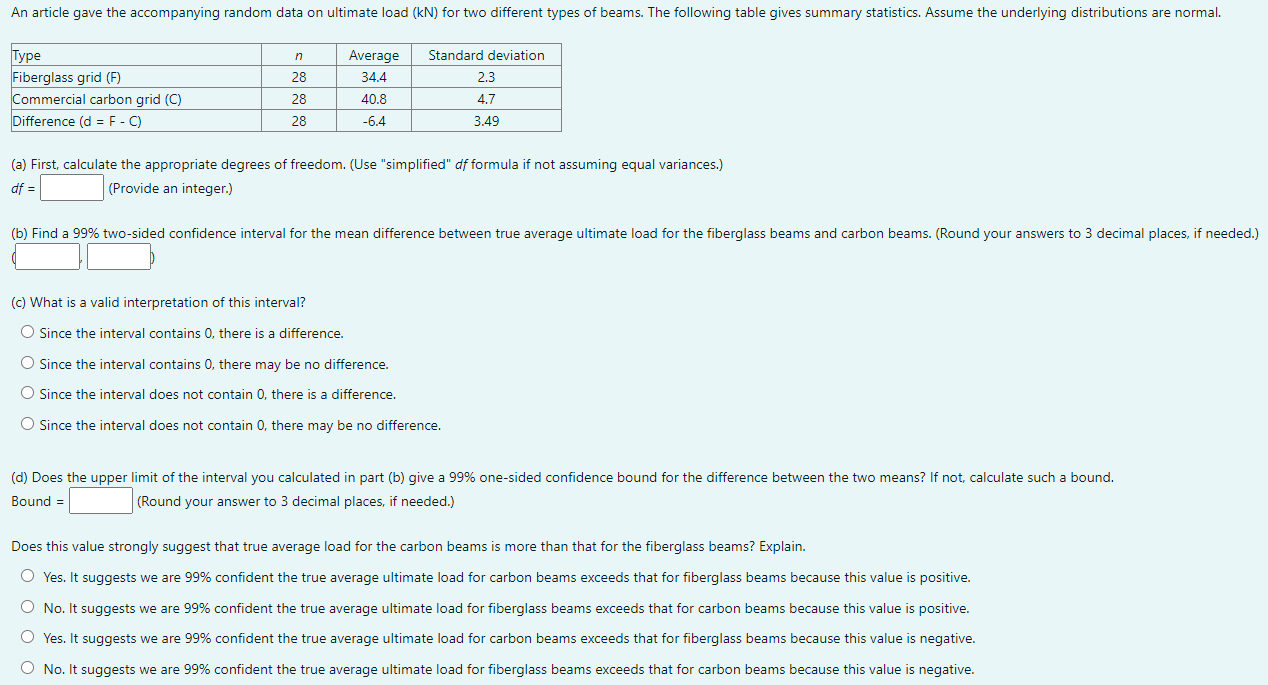Home /
Expert Answers /
Statistics and Probability /
a-first-calculate-the-appropriate-degrees-of-freedom-use-34-simplified-34-df-formula-if-not-assum-pa226
(Solved): (a) First, calculate the appropriate degrees of freedom. (Use "simplified" df formula if not assum ...
(a) First, calculate the appropriate degrees of freedom. (Use "simplified" df formula if not assuming equal variances.) \( d f=\quad \) (Provide an integer.) ( (c) What is a valid interpretation of this interval? Since the interval contains 0 , there is a difference. Since the interval contains 0 , there may be no difference. Since the interval does not contain 0 , there is a difference. Since the interval does not contain 0 , there may be no difference. Bound \( =\quad \) (Round your answer to 3 decimal places, if needed.) Does this value strongly suggest that true average load for the carbon beams is more than that for the fiberglass beams? Explain. Yes. It suggests we are \( 99 \% \) confident the true average ultimate load for carbon beams exceeds that for fiberglass beams because this value is positive. No. It suggests we are \( 99 \% \) confident the true average ultimate load for fiberglass beams exceeds that for carbon beams because this value is positive. Yes. It suggests we are \( 99 \% \) confident the true average ultimate load for carbon beams exceeds that for fiberglass beams because this value is negative.
